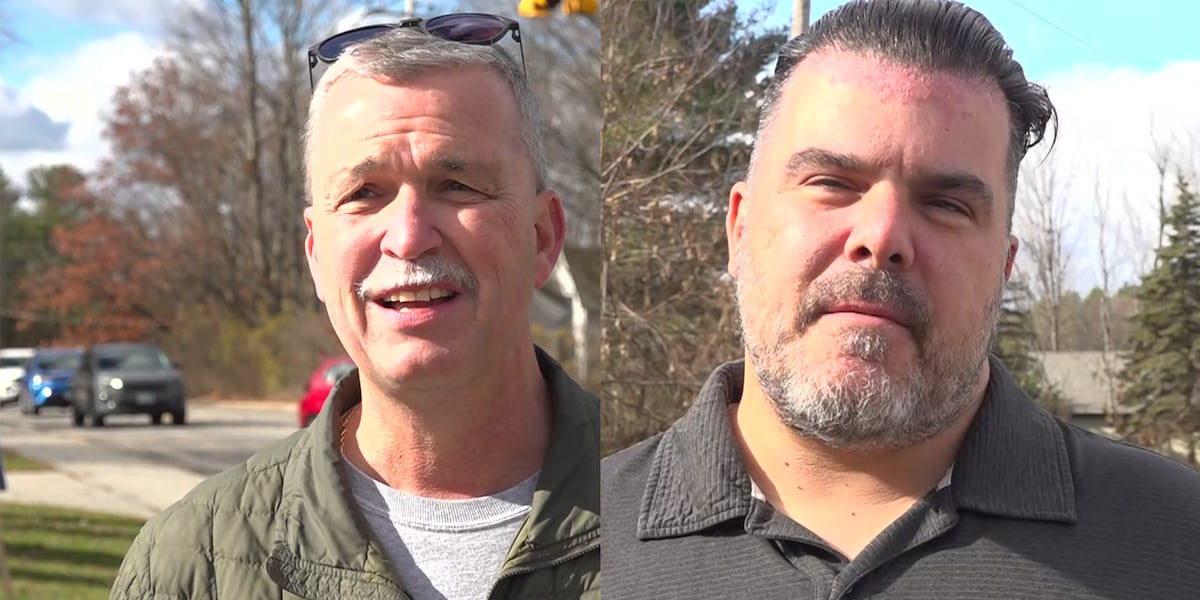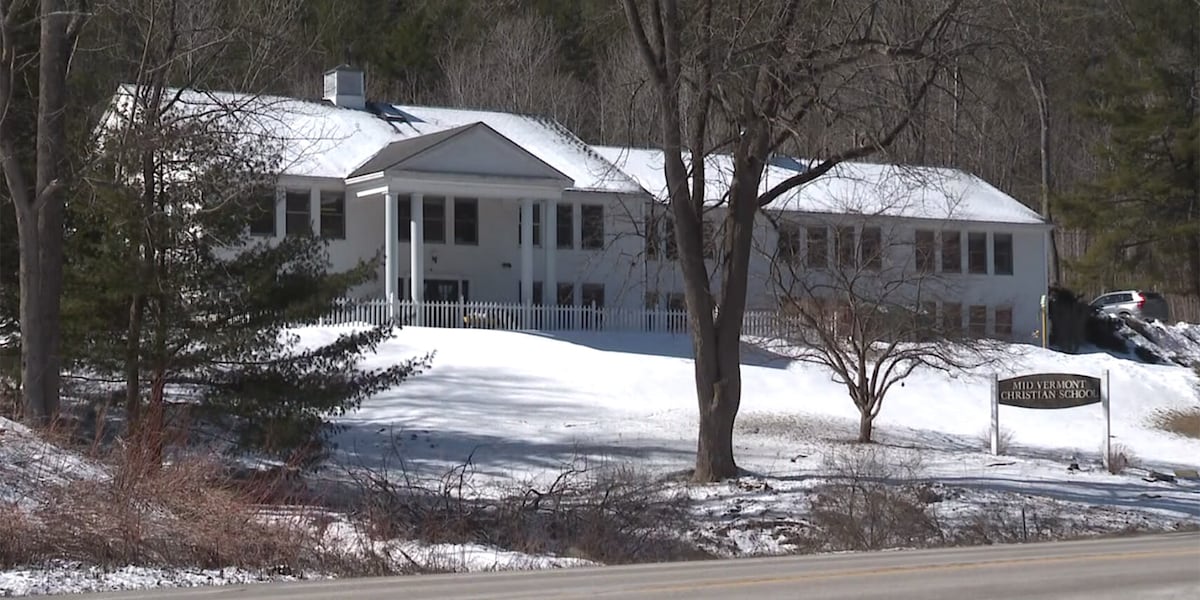WOODSTOCK — A regional high school map, one of three drafts under consideration by a statewide redistricting task force, has inspired concern from members of the Mountain Views Supervisory Union board.
The map in question would to create districts centered on regional comprehensive high schools based primarily on drive time. Mountain Views Board Chairwoman Keri Bristow called it disturbing in a Monday night meeting held in the Woodstock middle high school’s library and via Zoom.
The map “caused quite the fear” for MVSU board members because “our district was completely blown up,” she said.
The proposal would divide MVSU among four new governance regions, sending students to comprehensive high schools in neighboring districts. Such schools are “large enough to offer a wide array of courses, electives, and co-curricular activities” and are often near career and technical centers.
Currently, MVSU includes the member towns of Barnard, Bridgewater, Pomfret, Woodstock and Killington Vt., Pittsfield, Vt., Plymouth, Vt. and Reading, Vt.
Under the comprehensive high school plan, Woodstock and Pomfret students would end up at Hartford High, while Barnard students would be funneled into Randolph High and Bridgewater students would attend Rutland High.
“This model dismantles the MVSU current configuration, and while there is no statement in this presentation regarding closing schools, it is difficult to see where (Woodstock Union High School and Middle School) would be maintained,” MVSU Superintendent Sherry Sousa wrote in a letter to families last week.
“How do you take apart one of the most successful Public Education programs in the State of Vermont in order to comply with a law that few citizens had the opportunity to weigh in on?” Sousa wrote in the letter.
After the map’s release, the Mountain Views Supervisory Union, or MVSU, invited state Rep. Rebecca Holcombe, D-Norwich, who sits on the Vermont School Redistricting Task Force, to its meeting Monday night.
She sought to reassure those gathered at the district offices. The regional high school map is “not moving forward as is,” Holcombe said Monday, and was more of a “thought exercise” than a viable map. In general, she said the maps will be flexible guidelines.
Holcombe said the two other maps presented by task force members, one that would create 13 districts around existing Career and Technical Centers and one that would make five “regional boards of cooperative education services,” or BOCES, that would combine administrative resources, are also being revised.
“We felt that we had to let people try to throw things on the table,” Holcombe said. “Not everything on the table will go forward.”
How the maps will be implemented and what impacts they will have on existing schools and districts is not yet clear and depends on which option the state goes with or chooses to revise, Holcombe said. In general, the maps are “not about facilities” and focus mostly on how schools can share administrative responsibilities.
For example, the BOCES map is “agnostic to what sits underneath it” and could exist on top of current resources and buildings.
The School Redistricting Task Force formed in July following the passage of Act 73, an education reform bill aimed at boosting student performance and cutting education costs.
The 11-member group includes Holcombe and Jay Badams, a recently-retired SAU 70 superintendent who lives in Strafford. The group is charged with redrawing Vermont’s school districts so each has between 4,000 and 8,000 students.
On Monday night, Holcombe updated the MVSU on the task force’s progress. State Sen. Alison Clarkson and state Rep. Charlie Kimbell, both Woodstock Democrats, also attended the meeting. The Legislature will review the task force’s recommendations in January and use them to guide any final decisions.
Fresh in the mind of Mountain Views’ leaders is the experience of reorganizing following the passage of Act 46 in 2015.
Bristow, who was a teacher and later a board member during the Act 46 process, said it was “one of the most painful experiences for our district” to figure out how to consolidate and manage resources.
The supervisory union is open to growing but is opposed to any plan that would split up its towns, Bristow said. MVSU sent a letter to the task force in September proposing that it be combined with the Hartford School District and Windsor Southeast Supervisory Union.
“We’re cooperating with what the task force wants, which is bigger regions, and so on and I think a lot of people here are very concerned about the break up of the district,” Bristow said.
The proposal for the three districts to merge is similar to the proposed map based on the location of Career and Technical Centers, which proposes one district around the Hartford Area Career and Technical Center.
The similarity between the proposal and the map was immediately obvious to Holcombe when the map was presented. She said she expects the task force members who drew the map will consider the district’s proposal in their revision process.
As far as feedback to take back to the task force, MVSU Board Member Matt Stout requested that the task force consider a “merit-based” approach that builds districts around the “best schools in the state.”
Woodstock Union High School has strong college placement, a wide selection of advanced placement classes and strong arts, theater and sports programs, Stout said.
“People will tell you they came here for this school.”
Resident Kim McCarthy moved to Woodstock in August specifically because of the school district and said some of the proposed changes concern her. She said changes to her children’s “education and preparedness and well-being for the future” could cause another move.
“It would be really disheartening to have just moved here and frankly put back on the table moving again,” McCarthy said.
But, Holcombe said it is “pretty hard to know what a high performing school is” and to draw maps based on them because school quality can be defined in many ways.
It will take time, likely at least a few more years, to establish the new districts, especially if new schools or facilities need to be built, Holcombe said. The task force has to present three final recommended maps ahead of the January legislative session.
One big unknown for MVSU is the future of the Woodstock Union middle and high school, which is one of the school buildings in the poorest condition in the state and has been slated for reconstruction for years. Holcombe said it is not clear what would happen to any construction bonds taken out by the district if it is redrawn.
But, Bristow said the supervisory union, which has been pushing for a new building for years “cannot wait” for the Act 73 plan to be resolved. The board plans to put another bond before voters next March.
Residents will have another opportunity to speak with legislators on Tuesday, Nov. 18, when the Vermont Senate Committee on Education will host a community meeting at Woodstock Union Middle High School at 3 p.m.
“If people from the district turn out to show their support, to show their concern and help us tell the story of how we’re taking the lead and serving as a model district that will be very powerful,” Rep. Kimbell said.





